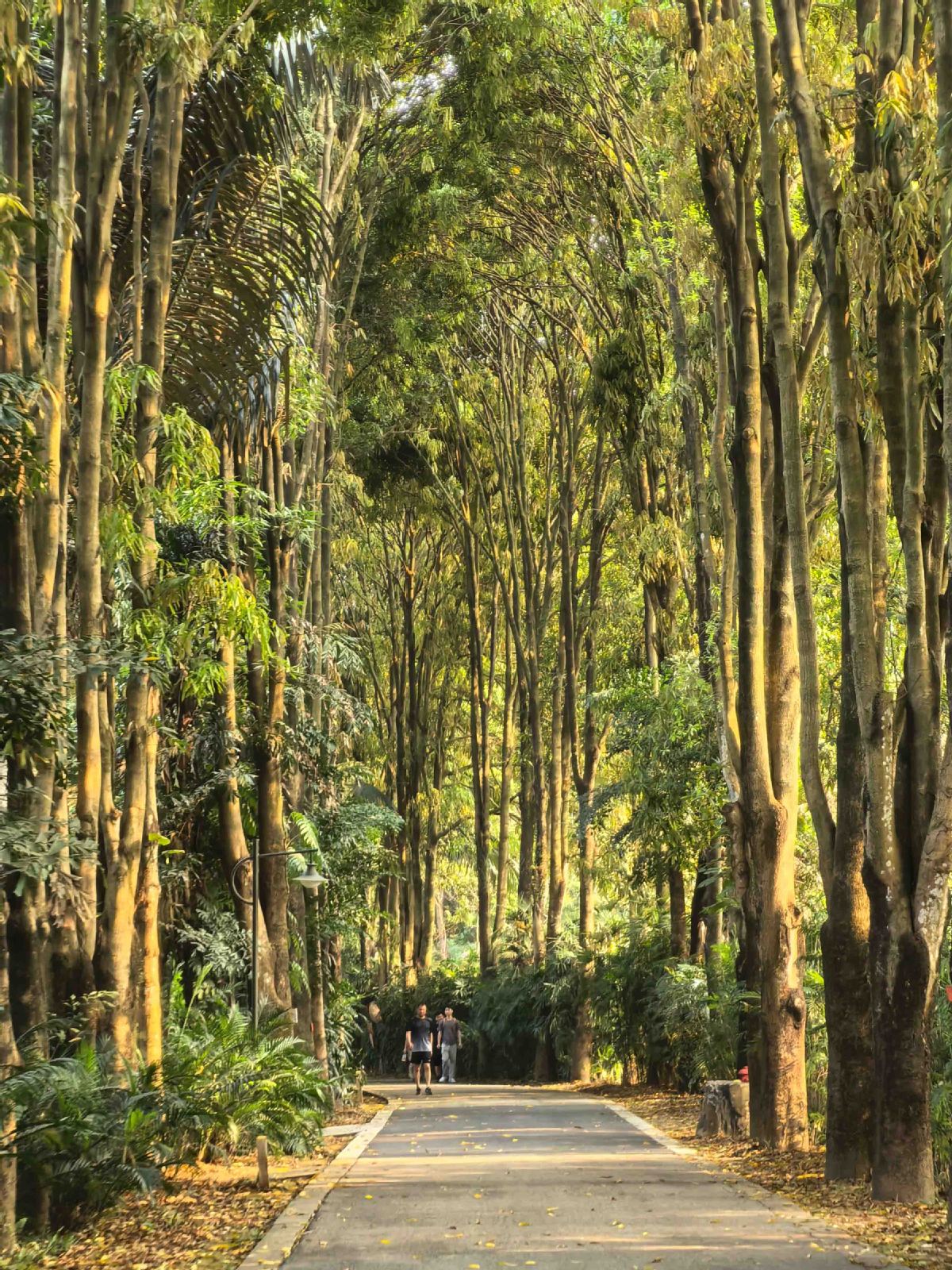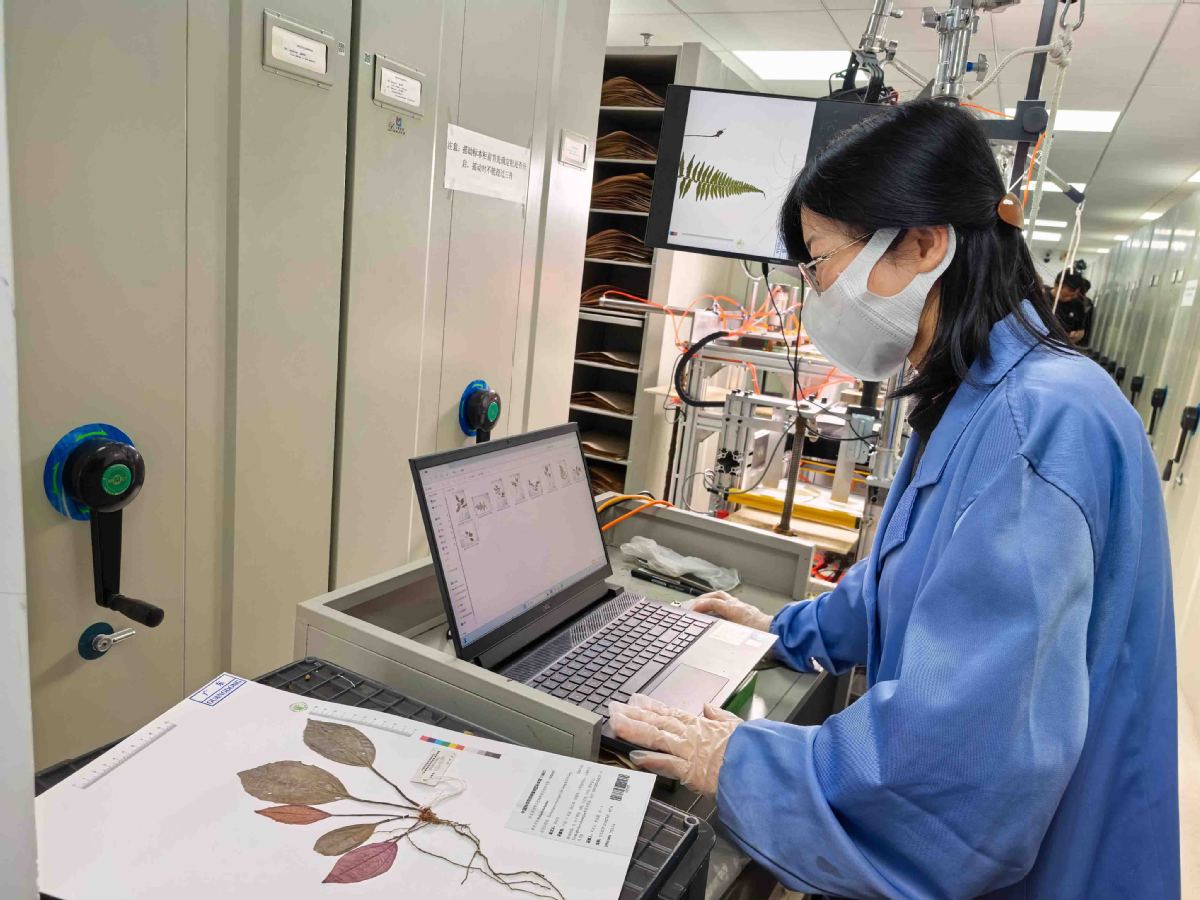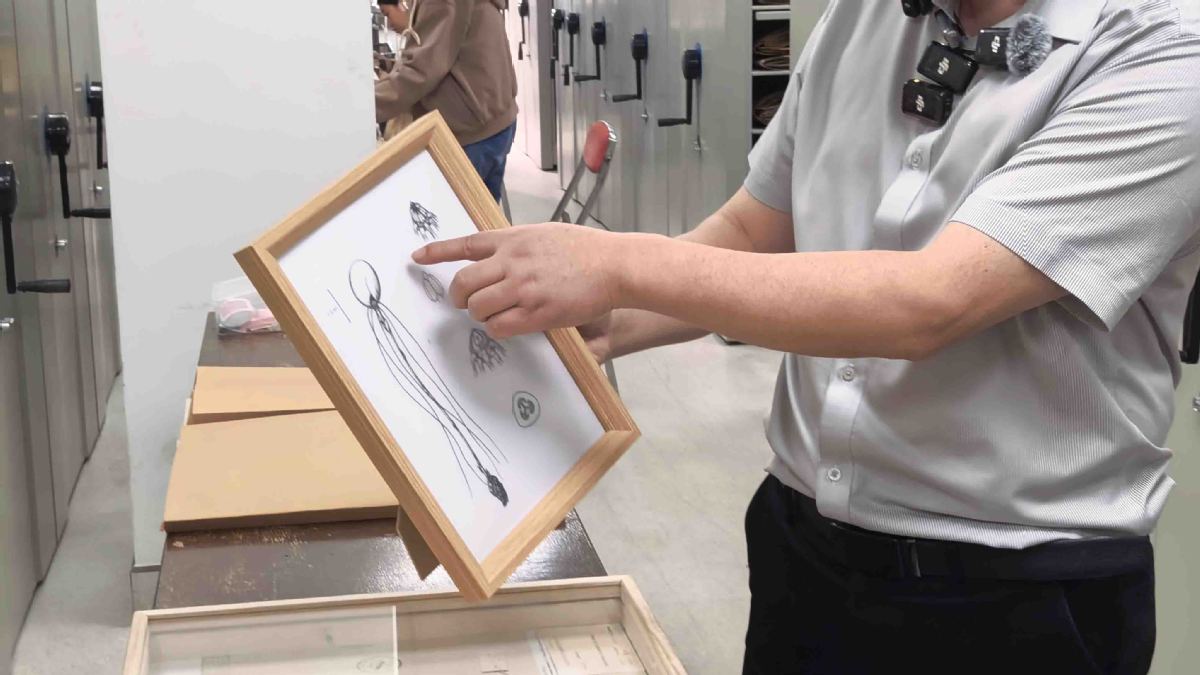
People take a morning walk in the South China Botanical Garden in Guangzhou on April 10. [Photo by Yan Dongjie/chinadaily.com.cn]
A flower once believed to be extinct for over a century, Primulina tabacum, now thrives again in Guangdong's karst caves, thanks to cutting-edge science and decades of relentless effort by Chinese researchers.
This botanical resurrection, emblematic of China's growing leadership in biodiversity conservation, was among the highlights revealed during a recent media tour organized by the Chinese Academy of Sciences to the Dinghushan National Nature Reserve and South China Botanical Garden (SCBG).
Rescuing a 'lost' species
Discovered in the 1880s by foreign explorers but unseen for over 100 years, the delicate Primulina tabacum was rediscovered in the 1990s with only three known surviving plants. SCBG scientists launched an ex-situ conservation program in 2002, decoding its unique pollination mechanism — self-fertilization triggered by falling petals — and using cloning technology to cultivate 3,000 wild-reintroduced species. Today, SCBG safeguards 1,050 rare plant species, including 558 state-protected varieties, in one of China's largest germplasm banks.
"We protect each plant not because of its known value, but because we don't yet know its potential. Once a species vanishes, it's irreversible," said Ning Zulin, deputy director of SCBG's horticulture center. The garden aims to protect 95 percent of South China's endangered flora and reintroduce 20 species into the wild by 2030.

A staff member of the Dinghushan National Nature Reserve examines specimen information on April 9. [Photo by Yan Dongjie/chinadaily.com.cn]
AI empowers biodiversity guardians
At SCBG's herbarium, AI and big data are transforming conservation. An intelligent specimen management system, Cathaya, digitized 50,000 plant specimens in 2024 alone. Its companion app, BioGrid, which was developed using AI and scientific databases, has now gathered over 400,000 occurrences and enables real-time species identification and public participation in biodiversity projects.
"This system sets a new paradigm for biodiversity research," said Luo Shixiao, the herbarium's curator. Engineer Xu Zhoufeng added that BioGrid enhances precision in plant localization and data collection, bridging gaps between experts and citizens.

Specimen-making equipment at the reserve. [Photo by Yan Dongjie/chinadaily.com.cn]
Dinghushan: A carbon sink pioneer
Established in 1956, the Dinghushan National Nature Reserve — China's first nature reserve — has emerged as a global model. Dubbed the "green pearl on the Tropic of Cancer", its 98 percent forest coverage shelters 2,291 species of higher plants and 277 bird species. Crucially, its research has reshaped global understanding of carbon sequestration.
In 2006, the Dinghushan team discovered that a 400-year-old primary forest still possesses a strong carbon sequestration capacity. This finding was published in the renowned international scientific journal Science.
Based on this discovery, the research team proposed the "non-equilibrium theoretical framework" of ecosystems. The related research achievements were awarded the Second Prize of the National Natural Science Award in 2008.
Estimates of carbon sequestration based on the terrestrial surface suggest that China's terrestrial ecosystem carbon sinks may be underestimated by half. This research, which won the Second Prize of the National Natural Science Award again in 2023, directly supports China's climate negotiations and the dual carbon strategy.
"Research shows that China's carbon sink function is highly sensitive to environmental changes, which presents both challenges and opportunities," said Liu Juxiu, director of the Dinghushan Station. The station collaborates with more than 20 research institutions worldwide, continuously advancing the study of global change ecology.

A staff member explains a valuable specimen. [Photo by Yan Dongjie/chinadaily.com.cn]
Harmony between humans and nature
The reserve's success lies in balancing conservation and livelihoods. In 2024, authorities retained high-quality farmland within its borders. "Farmland supports locals while feeding wildlife — a win-win," said Ren Hai, SCBG director.
As China strides toward its "dual carbon" goals, institutions like SCBG and Dinghushan exemplify how science, technology, and inclusive policies can safeguard Earth's biological heritage. "Nature reserves should bridge socio-economic development, not hinder it," noted Wang Ding from the Chinese National Committee for man and the Biosphere Programme. "Harmony with nature is our guiding principle."
With 20,379 plant species conserved and AI-driven tools scaling protection, China's ecological "treasure troves" are writing a new chapter in global conservation — one rooted in innovation and coexistence.
















